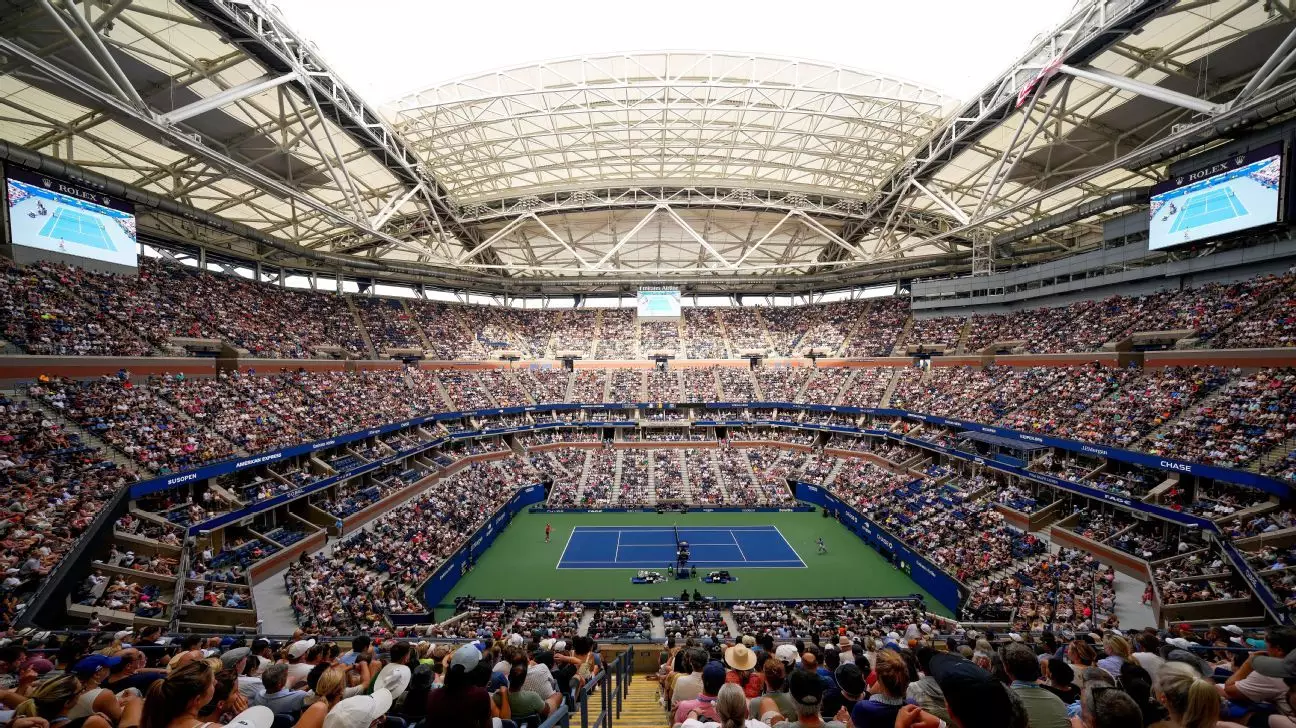The U.S. Tennis Association (USTA) recently unveiled plans for a monumental $800 million renovation of Arthur Ashe Stadium, positioning this initiative as the largest investment ever made in the US Open’s storied history. This bold move is not just a financial gamble; it’s a clear signal of the USTA’s commitment to elevating the status of American tennis on the world stage. The renovations promise to enhance the experience for players and fans alike, carving a fresh narrative for a tournament that has long been synonymous with tradition and excellence.
A Standalone Transformation Amid Controversy
What sets this undertaking apart is the USTA’s determination to finance the project entirely through its own resources, foregoing city government assistance. While this self-sufficiency may be admirable, underlying tensions exist in the form of a class-action antitrust lawsuit filed by a coalition of players, led by none other than tennis superstar Novak Djokovic. The lawsuit argues that the four major Grand Slam tournaments—US Open, Wimbledon, French Open, and Australian Open—have reaped $1.5 billion in 2024 alone, while players are receiving a mere fraction of that revenue. This unfortunate reality underscores a deep-seated inequity within the sport.
Players’ Call for Fairness
In a concurrent effort, top players like Jannik Sinner and Aryna Sabalenka have banded together to demand a fairer distribution of prize money and an enhanced role in decision-making processes affecting their careers. Such dissatisfaction among elite players cannot be ignored, especially as the USTA moves forward with luxurious upgrades and enhancements. The stark contrast between the lavish spending on facilities and the comparatively meager compensation for athletes raises serious questions about how the USTA prioritizes its financial resources.
A Comprehensive Vision for Arthur Ashe
Despite these controversies, the USTA’s ambitious overhaul of Arthur Ashe Stadium presents an exciting future for the US Open. The transformation includes a cutting-edge $250 million player performance center, which will feature additional courts, locker rooms, lounges, and essential athlete facilities next to practice courts. Additionally, the stadium’s seating capacity is set to increase from 3,000 to 5,000, reflective of an evolving vision that anticipates greater fan engagement and athlete well-being.
Moreover, the upgrades extend beyond mere numbers. The USTA plans to revitalize the spectator experience with enhanced luxury suites, modernized dining options, and improved infrastructure such as larger concourses and updated restrooms. The aim is to turn Arthur Ashe into a more welcoming and enjoyable venue without drastically altering its capacity—a balancing act that speaks volumes about the planning behind this project.
Looking Ahead: The Future of the US Open
Scheduled for completion in time for the 2027 tournament, the renovations will incorporate an innovative “grand entrance,” positioning the US Open not just as a tennis event but as a cultural spectacle. This bold vision, however, elicits mixed feelings as it questions the equity of wealth distribution within the sport. While fans anticipate state-of-the-art amenities, the integrity and commitment to fair play among players remain paramount. The USTA has a unique opportunity to not only reshape a stadium but also to redefine its relationships with the athletes who breathe life into this grand tradition. Only time will tell if this transformation marks a new era for tennis or merely a facade behind which old problems persist.

